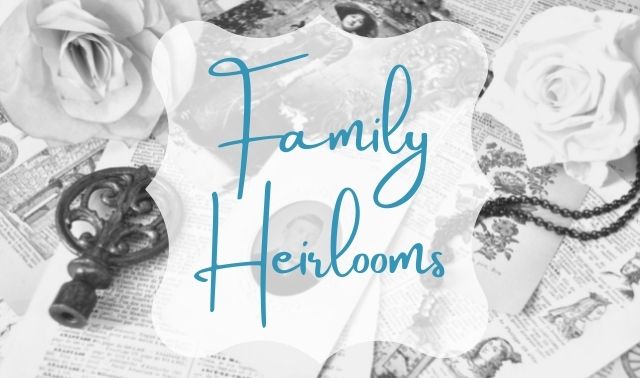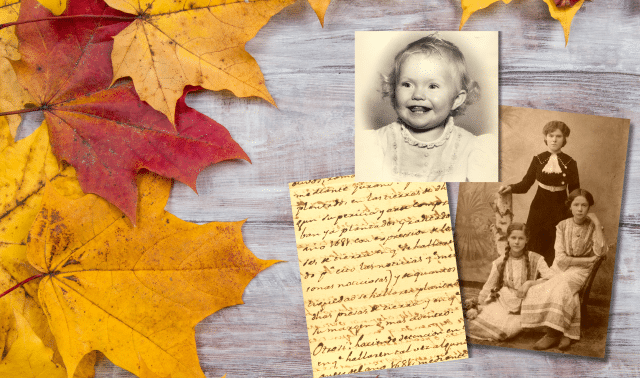When 18th-century British scholar Thomas Fuller wrote, “Many things grow in the garden that were never sown there,” I doubt he included memories in his harvest. But memories grow as deep as family roots — particularly in gardens that preserve our ancestors’ plants and flowers.
Memory, or “heirloom,” gardens are an undercultivated branch of genealogy. Although preservationists focus on faded photos, delicate wedding dresses and tarnished medals of honor, flowers planted by your ancestors’ hands can yield equally sweet memories.
My first foray into memory gardening came after I found the graves of my great-great-grandparents. I discovered the plots in a stand of timber, buried under fallen limbs and waist-high weeds. Violets and asters grew near the toppled tombstones, along with wild irises and day lilies. I picked a violet for pressing, and uprooted a lily that would become the first of my heirloom plants. Was the lily I took planted by a relative? I’ll never know for sure — but it’s now a tangible reminder of my ancestors’ lives. You can honor your family’s horticultural heritage, too, whether or not you have a green thumb. Look to these tips and ideas for inspiration.
Sowing Seeds of Family History
Of course, we’d all love to have offspring of plants our ancestors actually cultivated, as amateur genealogists Karen Patchett and Sue Peeler do. Patchett’s pink rain lily is a descendant of one her great-grandmother planted on the family homestead in Carroll County, Ind. Peeler’s treasure is a white iris that originally traveled to the Midwest with pioneer ancestors in the early 1800s. “To me,” says Peeler, “the irises are every bit as precious an heirloom as the sterling silver and hand-painted china that one of my sisters inherited.”
If you’re not as lucky as Patchett and Peeler, you can fill your memory garden with bulbs from old cemeteries (always ask permission before digging and perhaps bring a replacement bulb), plants found near an ancestral home, the types of flowers your mother carried at her wedding, or any plant that recalls a special family moment. For example, sweet Williams will always take me back home to St. Joseph, Mo., because their fragrance meant spring had finally arrived after a long, gray winter.
Renee Karas includes plants bearing family names in her heirloom garden. It boasts a Queen Elizabeth rose in memory of Karas’ mom, Joseph’s coat for her brother, and a lamb’s ear because her mother used to call her “Lambie.”
Another way to honor your ancestors is to grow plants from what gardening gurus call “heirloom seeds” — those harvested from successive generations of an original “ancestor” plant. For example, some of the seeds planted at Thomas Jefferson’s Monticello descend from plants Jefferson himself grew. Heirloom seeds produce offspring exactly like their parent plants; they can come from family gardens or old commercial varieties, but they aren’t hybrids or genetically modified. Interestingly, gardeners can be as keen about a seed’s pedigree as you are about your own.
Putting heirloom plants in your garden lets you savor the past, even if you can’t use seeds spawned from your forebears’ actual foliage. For example, you could grow a tomato from a seed whose parent plant sprouted in 1840 — your ancestors might have eaten the same variety. And with names such as Abraham Lincoln and Arkansas Traveler, what history huff could resist these seeds?
By planting heirloom seeds, you also might be saving a variety from extinction. Our ancestors didn’t go to a local nursery to buy seedlings every spring — they cultivated plants from seeds they saved from year to year. But that practice has gone by the wayside in the last generation or so. According to the Clemson University Cooperative Extension Service, prized, longstanding varieties are being lost as fewer people save seeds. And for many gardeners, preserving an heirloom plant is a connection to their heritage.
Heirloom seeds, descendant bulbs and flowers from a cemetery or ancestral homestead all can have a place in your memory garden. But planting is just the beginning. To ensure your heirloom plants live on, follow these simple tips from the Seed Savers Exchange:
- Store seeds in an airtight container, in a cool and dry place.
- If you have seeds from more than one variety of a plant (two types of morning glory, for example), plant only one variety. Otherwise, the plants will cross-pollinate, and the seed line will no longer be pure.
- Harvest seeds before the plant naturally drops all of them on the ground. Because many annuals are self-seeding, though, you can let some seeds drop to the ground. The flower wilt reappear the following year.
- Share seeds with other family members. This increases the chances of keeping the line alive.
- Plant the seeds every year — they do better when grown annually than when stored long-term. ? If you have root-based flowers or vegetables, ask your local nursery about the best way to keep the plants alive from year to year.
Growing Memories
If you’re going to be a memory gardener, you’ll need to buy a journal to chronicle your preservation attempts. Any journal will do, but use one with archival paper to ensure your entries last as long as your plants. Next, get in the habit of photographing the plants, flowers and trees that make up your heritage garden.
As you add plants, keep a record of why you made certain choices. For instance, if your ancestors lived in Colonial Williamsburg, you may want to buy a Williamsburg wisteria and train it to grow along your trellis. Unless you document your reason for picking the plant, your kids or grand-kids may never understand the connection.
Your journal should include photographs of your garden. If you’re not used to shooting flowers, brush up on your picture-raking techniques. For example:
- Shoot your plants before 10 a.m. or after 4 p.m., when the sun is low in the sky and colors appear more vivid.
- If your flower sits under other plants, use a piece of aluminum foil to reflect light onto it and diminish the shadows.
- Fill the frame with the image — don’t get so far away that you can’t see any details of the petals or leaves.
- Unless you have a super-steady hand, consider using an inexpensive tripod or monopod for stability and sharper pictures.
You can involve the whole family in collecting leaves or petals from your plants, then pressing them as mementos for the memory-garden journal. Or instead of pressing, dry the blossoms (you can use several methods, including sand drying, air drying or applying a desiccant). See pages 64 and 65 for resources on how to dry and press flowers.
Mount pressed flowers in your journal with stitches, a few drops of glue or Mylar photo sleeves. Be sure to note the date (including the year), as well as a brief message telling future generations something about the plant — and your family — that you especially want them to know.
Through journaling and photos, your heirloom garden can even cultivate new memories. But above all, it’s a rewarding way to preserve cherished recollections of yesterday. When you smell a rose your great-grandmother planted or snap an 1850 black valentine bean just as she did, you can’t help feeling closer to your roots.
Branch Out
Can’t plant an offshoot of an actual family tree — say, that stately old oak in your grandparents’ backyard? Honor your forebears by planting a tree from America’s past instead. You can buy offspring of famous flora from American Forests Historic Tree Nursery. The selection includes tulip poplars grown from trees George Washington planted at Mount Vernon, red maples from Walden Pond and honey locusts from the Gettysburg battlefield. Prices vary, but most trees cost $70 to $150.
From the May 2004 Preserving Your Family History









